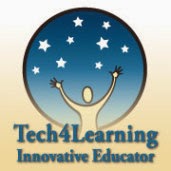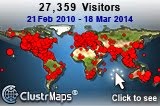 After finally getting the 20 new iPads set up and ready to use (a major undertaking for which I take no credit-- read about it here), I am planning to embark on an explorative journey of how to best use these tools to transform learning in 2nd grade.
After finally getting the 20 new iPads set up and ready to use (a major undertaking for which I take no credit-- read about it here), I am planning to embark on an explorative journey of how to best use these tools to transform learning in 2nd grade.Aside from a little fun in Kitah Alef (1st grade) one afternoon, using Doodle Buddy to practice writing Hebrew letters, I have very little experience with the iPad as a school device. I am only a moderately fluent user of my own iPad, which I use mostly to consume information.
So, where to begin?
I will be using iPads in one of the 2nd grade learning centers, twice a week. My initial goals are to learn more about what can reasonably be done by 2nd graders during this period of time and to let the kids do a bit of structured exploration. So far we have only been able to add free apps to our iPads. (Here is our list.)
Rationale
I need to do my own experiential learning of how to use the iPads with young children, while continuing to gain fluency in using the iPad for my own productivity. I am willing to allow curricular goals to take a backseat in the early stages of exploration. In my many years of using technology with students (of ALL ages) I have always had big goals, but I have learned that what seems simple to me is not always as simple as it seems. In fact, I believe that one of the reasons many teachers turn off from using technology actively with students in the "messiness" of it. For me, part of embracing the messiness (which I have come to love) is to realize that it's all learning.
Plan•Do•Review
In thinking about how to structure the early exploration, I recalled a model called Plan, Do and Review. In researching the method, I see that it is used most frequently in preschool, but is also indicated as developmentally appropriate for use in lower elementary grades.

I like this model because it gives students opportunity to explore and choose but within a guided structure designed by the teacher. I believe that creativity and exploration are often more productive within a structure. I have observed that students, when given too many choices, may have trouble committing to an activity. They become overwhelmed with choices and jump around from one thing to the next, never really "doing" anything.
Plan
In the initial meeting with students, after a brief introduction to the iPad and discussion about proper care and handling, I plan to provide students with 3 or 4 choices of apps/activities to freely explore. I will keep demonstration to a bare minimum and let the focus be on problem solving and exploration for the students.
Ideas for choices:
•Listen to a student created podcast, downloaded from the MJGDS podcast channel on iTunes. We have many excellent, student-created podcasts, including one that they made last year in first grade.
•Read an eBook (we have a few free eBooks downloaded, as well as two student-created eBooks.)
•Sock Puppets
The emphasis will be making a choice and then sticking to that choice for the entirety of the "do" period.
Do
Doing is the active engagement. Some choices will offer more exploration and experimentation than others. It's all good. Or even if it's not good, it's ok. That's why there is time to review.
Review
Review can be formal or informal. I am hoping to have time for a formal, written review. I've created a google form for students to use (at this point, I will probably print the form and have them write it. In the future, we plan to download the forms app so students can fill out the form on the iPads).
Although that will complete one Plan, Do, Review session, the cycle will continue with the next session as students become more familiar with the process itself, as well as the things they enjoy doing during their "do" time.
This is my plan for at least the first few sessions of working with the 2nd graders. It should give me opportunity to get a feel for using the iPads with the small groups. From there, the teacher and I will strategize on next steps.
I welcome your ideas and feedback, as well as suggestions for great (especially free) apps to use with young students.








